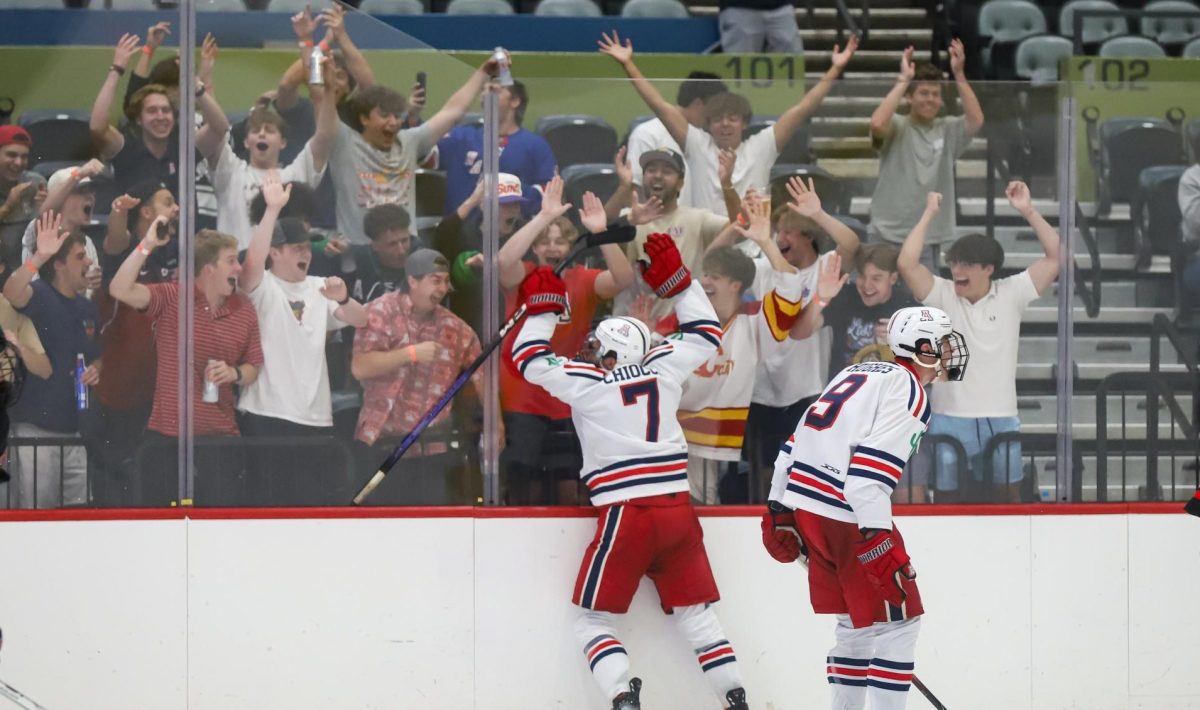Nick Foles is hurt. Matt Scott is in. Foles is known for his arm, Scott is known for his feet. Common sense tells us that, with Foles now out indefinitely, Arizona would change its game plan to better suit Scott.
But don’t expect a drastic change, if even a noticeable change at all.
Speculations have been running wild all over campus and throughout the media that the Wildcats offense will miraculously morph into something else by the time the team faces Washington on Saturday night.
Will Arizona become an option team? Will the coaches call for Scott to scramble every other play? Is Juron Criner going to become irrelevant because Scott won’t throw it downfield as often?
No, no and no.
Imagine you’re running a Broadway show and half way through the show’s season your lead actor has to leave for whatever reason. Do you replace him and then rewrite the entire script to accommodate the new actor’s strengths? No, you plug the new guy into the same role and continue running the same play with, perhaps, a few slight changes.
The same holds true for football.
The Wildcats are exactly halfway through the regular season and are too far into their scheme that it would be chaotic to try to change things up at this point. You won’t suddenly see an option-heavy offense, Scott will actually be discouraged to run too often, and Juron Criner will still have plenty of touches.
Let’s clear something up right away: Matt Scott can run, sure, but he isn’t Denard Robinson from Michigan or Nebraska’s Taylor Martinez. He’s not as fast as them and he isn’t as athletic of them – nobody is, and that’s a good thing.
While offenses that feature a run-first quarterback can put up numbers more shocking than that lame Monday Night Football game between the Jacksonville Jaguars and Tennessee Titans getting higher ratings numbers than the ALCS game between the Yanks and the Rangers, those same offenses are also guaranteed to be completely shut down a few weeks a year.
In order to move the ball regularly, especially in the Pacific 10 Conference, you need to be able to pass regularly.
Because Scott is a quarterback that hasn’t shown any sort of pocket presence in the games he’s played in the last two years, he does tend to get happy feet and scramble. This is extremely difficult to block for and is a huge contributor to the excess of sacks the Wildcats let up against Washington State, but to Scott’s credit he always looks to pass first while scrambling rather than immediately crossing the line of scrimmage.
The most concerning thing to come out of Saturday other than Foles’ knee bending inward was the fact that head coach Mike Stoops said that Scott struggled with his hot reads. A hot read is when the defense is blatantly showing blitz, the wide receiver closest to the blitzing player changes whatever route he was originally supposed to run and instead goes to the spot vacated by the blitzing linebacker or defensive back, giving the quarterback a quick and easy target.
Maybe it was rust, but if Scott can’t make those reads against Washington’s tricky and aggressive defense, it could be a long night.
With all of this in mind, the only changes I expect to see with Scott under center are more run plays – to the running backs, not intentional runs from the quarterback – and the return of the wide receiver screen game.
Last year Arizona opened its season throwing quick screens, bubble screens and rocket screens as often as Stoops yelled at an official. They’re high-percentage passes, easy to run and executed quickly enough that they can turn into big plays.
Screens are, in essence, long hand offs. They’re the easiest plays a quarterback has to make. They were extremely prevalent at the beginning of last season but disappeared as the season went on and have been generally non-existent this year outside of a few to Criner here and there.
Incidentally, Scott was the quarterback when Arizona ran most of its screens.














